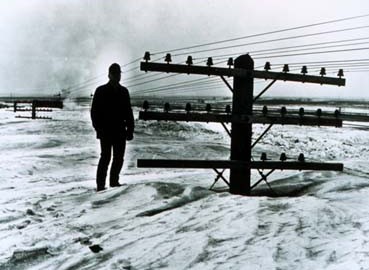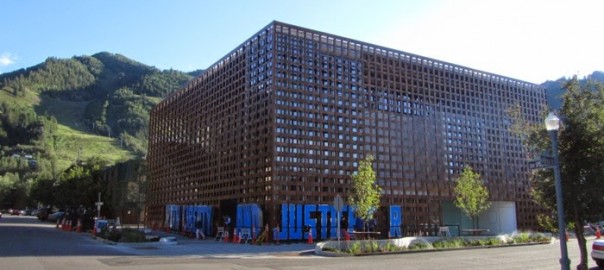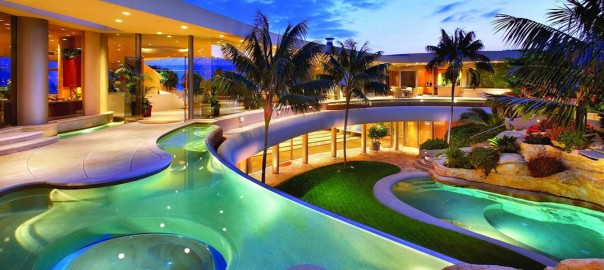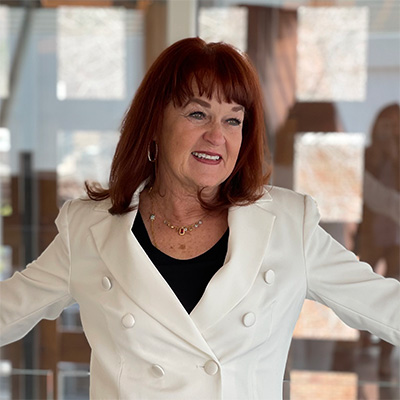Luxury Home Report
The one constant in luxury real estate is change. Change has arrived in many forms over the last decade: a movement from local to global marketing, increased reliance on technology, social media and shifts in consumer preferences. In this edition of the Luxury Market Report, we examine change in the context of:
• America’s top cities and ZIP codes for luxury home
listings and sales
• Market activity in Atlanta and New York
• How ultra-wealthy consumers view real estate
The shifts happening locally and globally point to a robust luxury housing market. You can especially see that change in the lists of top 20 U.S. cities and ZIP codes for luxury home listings and sales on page 6. In fact, four out of the top five U.S. cities—including San Francisco, Los Angeles, San Jose and Houston—were up by double digits. If you would like a more in-depth look at why these cities might be demonstrating strength, the Wealthy Consumer Survey on page 4 could shed some light. Certainly, you’ll get a new picture of modern luxury home buyers, and they are highly interested in acquiring real estate, not to mention tech-savvy and geographically mobile. This is especially true among younger generations; in fact, a majority of those under the age of 35 say that lifestyle considerations—as opposed to location—continue to drive their choices to buy.
This phenomenon has only just begun to play out in Atlanta, where a post-recession real estate recovery is underway. We examine the city’s luxury renaissance on page 13. Dubai is
experiencing a similar post-recession resurgence, which we also explore on page 15. All of these changes hint at a future that is open for expansion. New luxury epicenters are emerging all the time. This year, it was California’s Silicon Valley. Will mountain towns like Aspen and Park City—with all of their outdoor activities and culture—be the world’s next luxury hotbeds? Or what about island destinations like Honolulu or Kailua, with their white sandy beaches? In five years, what will our top city lists look like? It will certainly be interesting to watch.
High Net Worth Consumers and Real Estate/Research and Insights on Preferences and Behavior
The booming market for high-end U.S. residential real estate shows no signs of cooling, according to a survey of ultra-wealthy U.S. consumers with a net worth of at least $5 million. The survey reveals trends in intent to buy, age and gender demographics, a shifting preference toward lifestyle, desired amenities and the influence of social media. Youngest Buyers Most Likely to Make Large Purchase Nearly half (48%) of all respondents say that they plan to purchase a luxury home in the next 12 months, with personal use outpacing investment interest by a three-to-one margin. Purchase intent is far more pervasive among buyers under 35, 81% of whom plan to buy in the coming year. In addition, the youngest buyers are the biggest spenders, paying $7.8 million on average for their last home, compared to $6.8 million for buyers between 35 and 44 years of age, $2.7 million for those between 45 and 64, and $1 million for buyers 65 and older. Especially eager are women. The percentage of wealthy females contemplating buying rose to 46% from 31% in 2013.
RESEARCH AND INSIGHTS INTO PREFERENCES AND BEHAVIOR
HIGH-NET-WORTH CONSUMERS AND REAL ESTATE
You may picture wealthy Gen Y and Millenials as iPad-toting jet setters who aren’t anxious to tie up their cash in a home. But they are among the most active players in luxury real estate, according to a new survey of ultra-wealthy consumers.
The survey found that 73% of wealthy consumers under the age of 35—the most out of any age group—are considering a purchase of additional residential real estate in the next 12 months for personal use. These buyers also expect their home to appreciate by an average of 16% in the next five years, compared to 13% for buyers ages 45-64 and 11% for buyers 65 and older. Additionally, they are among the biggest spenders, as they paid $7.8 million on average for their last home, compared to $6.8 million for buyers between 35 and 44 years of age, $2.7 million for those between 45 and 64, and $1 million for buyers 65 and older. One reason for the price difference could be due to the kinds of homes they desire. Nearly three-fourths (72%) of respondents younger than 35 said that buying a move-in-ready home is important.
“Our agents in cities like Los Angeles and Miami tell us the same thing: new construction is king right now,” added Wright. “Younger luxury buyers are not looking for a project—they want everything turn-key, right down to the décor and furnishings. All of which, of course, adds to the home’s overall price tag.”
While location and price remain the most important elements in the decision making process for the majority of ultra-wealthy buyers, younger affluents are less inclined to choose a property based on geography. Thanks to convenient travel options and the ability to work from anywhere becoming more widespread, just 25% of the under-35 group reports that location dominates their search criteria, but 75% say that lifestyle considerations drive their choice of which home to buy. At the other extreme, 88% of buyers 65 and older say that location is the most potent driver of their next property search.
Younger affluents are also interested in different home amenities than their seasoned counterparts. Safe rooms (37%), home theaters (36%), pool (34%), outdoor kitchens (33%) and “green” or “eco-friendly” amenities (29%) remain at the top of the wish list for buyers under the age of 35. Compared to the 65+ demographic, those same features ranked far lower: 7% wanted safe rooms, 12% wanted home theaters, 16% wanted a pool, 17% wanted a pool and 10% wanted a “green” home.
Lifestyle vs. Location, Location, Location
Location is a very important consideration when buying real estate, but for a growing proportion of wealthy buyers—and especially younger ones—it’s not everything. With convenient travel options and the ability to work from anywhere becoming more widespread, wealthy buyers are not as tied to any particular geographic area as they were in the past. Just 25% of the under-35 group reports that location dominates their search criteria, but 75% say that lifestyle considerations drive their choice of which home
to buy. At the other extreme, 86% of buyers 65 and older say that location is the most potent driver of their next property search.
Most Popular Amenities Sought by the Wealthy
Most ultra-wealthy buyers are not interested in project homes or fixer-uppers, with 58% saying that the instant gratification of a fully built “turn-key” property equipped and ready to move into is more important now than it was three years ago. The tendency to prefer a move-in ready situation is far more pronounced among younger buyers. Nearly three-fourths (72%) of respondents younger than 35 say that buying a home that’s ready to move into has become more important than it was three years ago. Home features that ultra-wealthy buyers find more important today than three years ago are open floor plans (31%), fully automated home environment (25%) and pools (24%). Nearly one in four buyers under age 35 are including safe rooms and garage for four or more cars in their next homes. Almost one-third of all buyers under the age of 45 were demanding “green” or “low-emission” eco-friendly homes—perhaps a sign of the younger generation’s tendency to incorporate social and environmental considerations in their home purchase. The trend is also catching on among the larger group of wealthy buyers, with 21% saying that
they want to buy an eco-friendly home, up from 7% in 2013.
Influencing Buyers with Social Media
One rapidly evolving, but not surprising, development is that 29% of all those surveyed report being strongly influenced by social media, and that percentage more than doubles among the youngest buyers. On average, 60% of ultra-wealthy consumers under the age of 35 and 42% of those 35-44 report being influenced in their choice of agent by social media, while only 8% of those 45 and over reported such a strong influence from Facebook, Twitter and other sites.
Final Outlook
This survey not only reveals a growing appetite for luxury real estate, but a new picture of the modern-day luxury consumer—a consumer who is increasingly mobile, tech-savvy, cash-focused, socially conscious and less concerned with status. These consumers remain attracted to high-end real estate because of a strong perception of value and the urge to upgrade to homes that facilitate the lifestyle they desire.
Methodology
The New York-based Luxury Institute surveyed 506 ultra-wealthy U.S. consumers age 21 or older with minimum gross annual household income of $200,000 and minimum net worth of $5 million. According to the 2010 Federal Reserve Board Survey of Consumer Finances, these criteria represent the top 1.5 million (1.2%) of U.S. households ranked by wealth. The survey data have been weighted with respect to gender, age, income and region to match the profile of these households according to Federal Reserve and U.S. Census sources.
LUXURY LISTINGS BY CITY
U.S. CITIES WITH THE HIGHEST NUMBER
OF ACTIVE LUXURY HOME LISTINGS
America’s top cities and ZIP codes for luxury home
listings and sales in three distinct price points: $1,000,000+,
$5,000,000+ and $10,000,000+.
$1,000,000+
City State Number of Listings
New York NY 5,005
Miami FL 1,185
Miami Beach FL 897
Los Angeles CA 770
Brooklyn NY 731
Fort Lauderdale FL 729
Naples FL 712
Atlanta GA 622
Greenwich CT 566
Boca Raton FL 544
Houston TX 501
Honolulu HI 493
North Miami Beach FL 460
Park City UT 436
Sarasota FL 365
San Diego CA 362
Las Vegas NV 325
Santa Barbara CA 321
Washington DC 302
Newport Beach CA 301
$5,000,000+
City State Number of Listings
New York NY 1,573
Miami Beach FL 218
Greenwich CT 179
Aspen CO 129
Malibu CA 100
Los Angeles CA 96
Naples FL 90
Miami FL 87
Park City UT 81
Beverly Hills CA 72
Boca Raton FL 72
Santa Barbara CA 69
Fort Lauderdale FL 62
Brooklyn NY 59
Rancho Santa Fe CA 59
Laguna Beach CA 55
North Miami Beach FL 49
Palm Beach FL 46
Honolulu HI 44
Newport Beach CA 42
$10,000,000+
City State Number of Listings
New York NY 685
Miami Beach FL 82
Greenwich CT 51
Aspen CO 49
Malibu CA 44
Los Angeles CA 34
Santa Barbara CA 33
Naples FL 28
Beverly Hills CA 28
Miami FL 27
Laguna Beach CA 24
Brooklyn NY 19
Fort Lauderdale FL 18
Park City UT 18
Palm Beach FL 16
Rancho Santa Fe CA 15
Key Biscayne FL 15
Honolulu HI 15
Boca Raton FL 14
Newport Coast CA 14
LUXURY SALES BY CITY
U.S. CITIES WITH THE HIGHEST NUMBER
OF CLOSED LUXURY HOME SALES
America’s top cities and ZIP codes for luxury home
listings and sales in three distinct price points: $1,000,000+,
$5,000,000+ and $10,000,000+.
$1,000,000+
ZIP Code City State Number of Listings
10021 New York NY 496
33160 North Miami Beach FL 460
10022 New York NY 450
10011 New York NY 354
33139 Miami Beach FL 351
10019 New York NY 311
10023 New York NY 305
06830 Greenwich CT 299
06880 Westport CT 292
10024 New York NY 280
06831 Greenwich CT 267
06840 New Canaan CT 265
81611 Aspen CO 263
10013 New York NY 246
90265 Malibu CA 240
84060 Park City UT 236
10128 New York NY 235
33140 Miami Beach FL 224
92651 Laguna Beach CA 222
20854 Potomac MD 216
$5,000,000+
ZIP Code City State Number of Listings
10021 New York NY 195
10011 New York NY 156
81611 Aspen CO 129
10023 New York NY 124
10013 New York NY 122
33139 Miami Beach FL 110
10022 New York NY 104
90265 Malibu CA 100
06831 Greenwich CT 93
10065 New York NY 89
10024 New York NY 87
06830 Greenwich CT 86
10128 New York NY 77
10014 New York NY 72
90210 Beverly Hills CA 72
10019 New York NY 72
84060 Park City UT 71
10028 New York NY 64
10012 New York NY 58
34102 Naples FL 58
$10,000,000+
ZIP Code City State Number of Listings
10021 New York NY 91
10023 New York NY 79
10065 New York NY 53
10011 New York NY 52
10013 New York NY 49
81611 Aspen CO 49
90265 Malibu CA 44
33139 Miami Beach FL 41
10024 New York NY 41
10022 New York NY 40
10014 New York NY 37
06831 Greenwich CT 34
10003 New York NY 30
10019 New York NY 29
10028 New York NY 28
90210 Beverly Hills CA 28
93108 Santa Barbara CA 27
10075 New York NY 27
34102 Naples FL 25
92651 Laguna Beach CA 24
LUXURY SALES BY ZIP CODE
U.S. ZIP CODES WITH THE HIGHEST NUMBER
OF CLOSED LUXURY HOME SALES
The Coldwell Banker Previews International® program
presents America’s top cities and ZIP codes for luxury home
listings and sales in three distinct price points: $1,000,000+,
$5,000,000+ and $10,000,000+.
$1,000,000+
ZIP Code City State Number of Sales
94010 Burlingame CA 404
90266 Manhattan Beach CA 369
92037 La Jolla CA 348
90272 Pacific Palisades CA 334
92660 Newport Beach CA 319
94025 Menlo Park CA 316
92651 Laguna Beach CA 314
95014 Cupertino CA 306
90049 Los Angeles CA 303
95070 Saratoga CA 301
90210 Beverly Hills CA 295
95120 San Jose CA 292
33160 North Miami Beach FL 273
94087 Sunnyvale CA 273
33139 Miami Beach FL 272
06880 Westport CT 272
94941 Mill Valley CA 270
92130 San Diego CA 269
94539 Fremont CA 269
34102 Naples FL 268
$5,000,000+
ZIP Code City State Number of Sales
90210 Beverly Hills CA 104
81611 Aspen CO 50
94027 Atherton CA 44
90049 Los Angeles CA 40
90265 Malibu CA 38
34102 Naples FL 37
93108 Santa Barbara CA 32
06830 Greenwich CT 30
33480 Palm Beach FL 28
92651 Laguna Beach CA 28
90077 Los Angeles CA 27
06831 Greenwich CT 25
94010 Burlingame CA 25
90272 Pacific Palisades CA 25
33139 Miami Beach FL 24
10013 New York NY 22
10014 New York NY 21
92657 Newport Coast CA 21
10580 Rye NY 21
10021 New York NY 20
$10,000,000+
ZIP Code City State Number of Sales
90210 Beverly Hills CA 28
81611 Aspen CO 16
94027 Atherton CA 14
90077 Los Angeles CA 11
06831 Greenwich CT 11
93108 Santa Barbara CA 10
90049 Los Angeles CA 9
10013 New York NY 8
90265 Malibu CA 8
33480 Palm Beach FL 7
10021 New York NY 7
10014 New York NY 7
33139 Miami Beach FL 6
10011 New York NY 6
33140 Miami Beach FL 6
92651 Laguna Beach CA 6
96740 Kailua Kona HI 6
34102 Naples FL 6
10003 New York NY 5
10023 New York NY 5
DOMESTIC OVERVIEW: ATLANTA
For more than a century and a half, Atlanta has thrived as a commercial and cultural hub of the South, perennially attracting a large influx of new residents drawn to the city’s opportunity and lifestyle. Today, Atlanta is home to some of the nation’s largest companies, including Coca-Cola, UPS and Delta Air Lines, and it also has a thriving community of legal, financial and other well-compensated service professionals.
With this demographic and economic foundation, Atlanta is also home to significant amounts of wealth and a vibrant market for high-end real estate.
Rebound after Recession
After a period of dormancy during and immediately after the recession, Atlanta’s market for homes selling for $1 million or more is experiencing a robust recovery, both in number of homes sold and selling prices. “At one point, Atlanta was probably the second-worst market in the country behind Phoenix, but that’s changed, and now we are seeing multiple offers come in on many of our properties,” says Charlotte Sears, president of Coldwell Banker Residential Brokerage in Atlanta. “We knew we were headed for a nice recovery when we saw people who owned million-dollar homes put them on the market. Sellers
wanted to get on with their lives and buyers were looking for a good bargain, and since prices hadn’t fully recovered, it made for really good buys.”
Investors Spot Opportunity
Sears notes that depressed prices attracted interest from institutional investors, who bought up homes and tightened inventory. “That pushed prices up a little bit; then, the second wave of the recovery was driven by smaller ‘buy and flip’ investors, who took away more inventory, and prices picked up again,” says Sears, adding that corporate relocations to the area and job growth from area employers are helping to boost the current market.
Intense Interest in Buckhead
The hottest neighborhood for luxury real estate in Atlanta right now is the Buckhead community just north of Downtown, which has long been a destination for shopping, dining and entertainment, as well as fine homes. Within Buckhead’s prestigious 30305 ZIP code, sales of homes priced above $1 million tripled in the second quarter of 2014 from the same period in 2012, ( which was a low point), and rose 65% from last year. With an average selling price of $1.85 million, luxury home prices are up 27% in the past two years and 5% higher than in 2013.
Helping to drive interest in Buckhead is Buckhead Atlanta, a large mixed-use development by San Diego developer OliverMcMillan opening this fall. The destination will have 28 restaurants and luxury retailers, including marquee names like Helmut Lang, Hermès and Christian Louboutin. Outside of Buckhead, there is also strong interest in the Sandy Springs, Dunwoody and East Cobb areas northwest of Downtown. Outside of the Interstate 285 perimeter highway, Alpharetta is also surging as luxury home enclave.
Room to Run Higher
Atlanta’s high-end market has potential to continue its run, given the demand and the prices that are still low by national standards.“We did not have the unbelievable run-ups in prices that California or Florida had,” says Sears. “We’ve always been a good value, even at the height of the market, and now Atlanta is more active than ever because of suppressed demand.”
DOMESTIC OVERVIEW: NEW YORK
New York is known as the city that never sleeps, and the same could be said for its red-hot luxury real estate market. Feverish demand at the high end continues to send prices sharply higher on a year-over-year basis. Inventory is also rising, creating market conditions consistent with a seller’s market.
However, buyers still have some negotiating power as long as they know where to look.
Putting Numbers on Market Tightness
Generally, it is true that sellers can command premium prices in the city. However, the degree of negotiability varies widely across neighborhoods. This is driven primarily by the ratio of listings to sales, according to Pat Veling, founder and president of research firm Real Data Strategies. That is why he created two useful numerical scores of sellers’ pricing power: active inventory factor and active list price factor.
The active inventory factor is the ratio of listings to sales, with higher numbers suggesting more leverage for buyers.
The active list price factor is the average listing price divided by the average selling
price. Higher numbers indicate that sellers may be too optimistic on asking prices.
“The idea is to identify which local markets have the greatest-to-weakest demand relative to supply, and which local markets have sellers with homes more realistically priced,” says Veling. “In a perfect world, a buyer would match his or her lifestyle and location interests to those markets that show the highest levels of seller motivation and most realistic price expectations—that is, those with a high inventory factor and a low list price factor.”
However, there are exceptional properties in all markets that only a few buyers can afford. It’s hard to imagine, but in Manhattan, the list price benchmark for those properties is $50 million. Homes at these list prices often sell for cash, are typically full- or multi-floor units in the most upscale buildings and come with priceless views of the city or Central Park that cannot ever be replicated. They also become available so seldom that their transfer values are typically determined entirely by the seller and the buyer, and not by a lender who would value mortgage collateral more objectively through an appraisal. So, in order to create analysis results that are valuable to the largest number of potential buyers, those listed properties priced at $50 million or above have been excluded from the analysis.
“That way, the property and pricing characteristics of these truly exceptional properties do not skew the average list or sale prices to values that far exceed the normal values of nearby properties,” explains Veling. “This type of analysis is an art form, as much as it is a science. This context adds value and better understanding to our results.”
Tale of Two Downtown Markets
Buyers may have room to negotiate on properties in the 10006 ZIP code near the World Trade Center, west of Broadway and east of the West Side Highway. With 78 listings and nine sales above $1 million in the second quarter, this downtown neighborhood has the highest inventory factor of 8.7, meaning that there may be an abundance of available properties relative to recent sales volume.
Just a few blocks can make a big difference, however, when you are looking at market tightness. Battery Park City in the 10280 ZIP code, just west of the gleaming new Freedom Tower at the World Trade Center, has a small supply relative to sales for all neighborhoods. With 15 sales and 13 listings between $1 million and $50 million, Battery Park City has the lowest inventory factor of 0.9.
Room to Maneuver
Buyers may find more flexibility in the East Village and Stuyvesant Town. Sellers of million-dollar real estate in the 10009 ZIP code appear to be looking for prices substantially higher than most buyers have been willing to pay. With an average listing price of $5.78 million and average selling price of $1.45 million, this funky and chic neighborhood sports a high list price factor at 4.0. However, buyers may find more for their money in the resurgent parts of Harlem, from the northern border of Central Park up to 120th Street. The 10026 ZIP code boasts a low list price factor at 1.2. Although the average listing price was $1.9 million in the most recent period, the average selling price was $1.57 million.
TriBeCa Tops Priciest Neighborhoods, Bargains in Harlem
Even after taking these factors into consideration, you will still pay a premium if you want to live downtown. Manhattan’s highest prices for homes selling for at least $1 million in the second quarter were in the 10013 ZIP code, which includes the fashionable TriBeCa neighborhood, as well as parts of SoHo, Little Italy and the West Village. Here, the average selling price was $4.1 million, and the volume of sales at 134 was the fourth highest in all of Manhattan. If you’re willing to head uptown, you may still find some high-end bargains. The Harlem ZIP code of 10027, for example, had an average selling price of $1.38 million—the most modest pricing of all of Manhattan’s neighborhoods.
Of course, Manhattan offers many other neighborhoods. Whether your preference is Soho, Battery Park City or somewhere in between, the value of Manhattan real estate remains strong. For many, having a Manhattan address is still a dream.
To learn more about the international and domestic luxury market call Ruth Kruger today at 970.404.4000 and ruth@krugerandcompany.com or visit us online at www.krugerandcompany.com
This report is compliments of Caldwell Banker Previews International and the Luxury Market Report.





